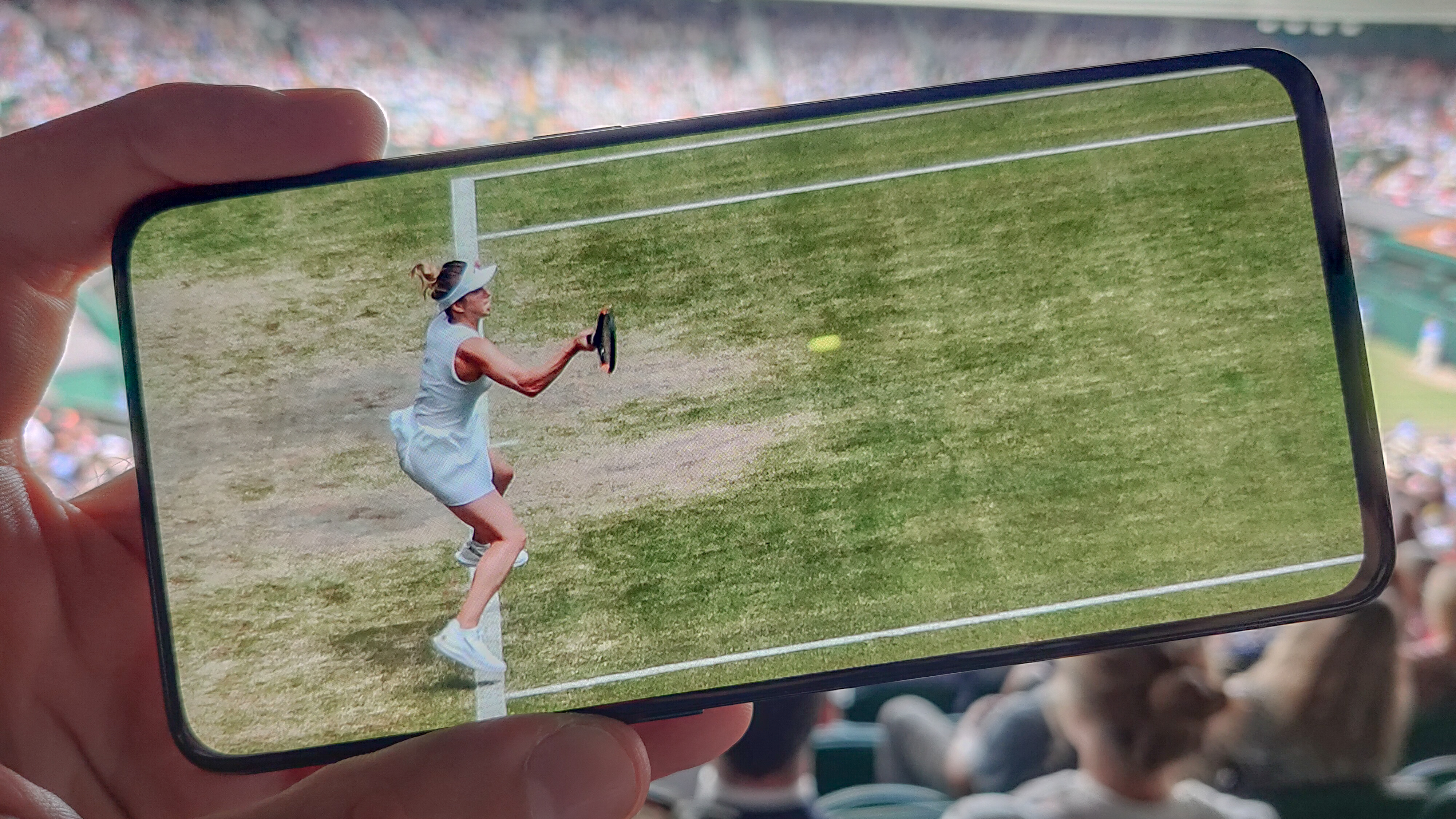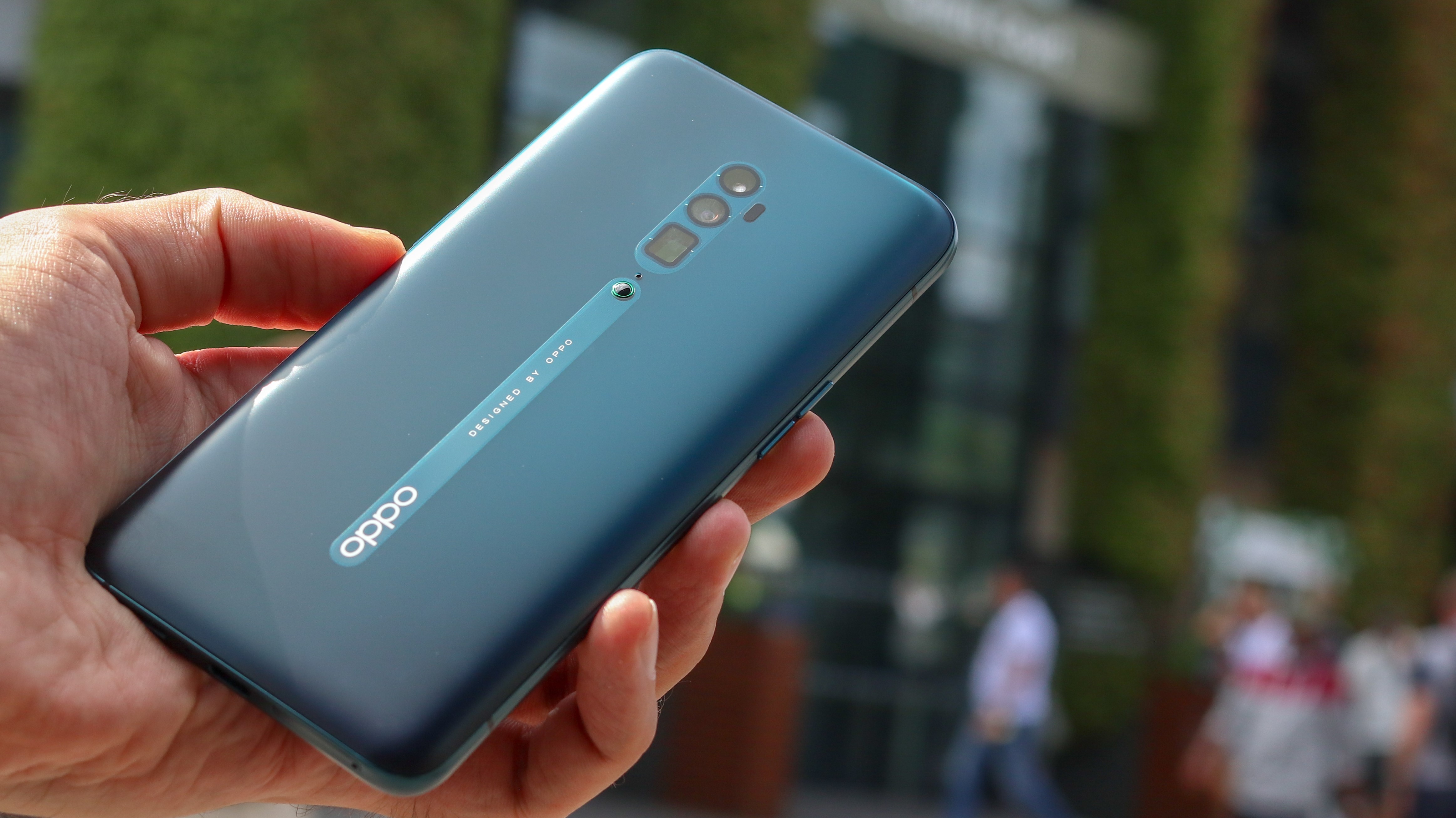How to master sports photography on a smartphone
Stop time with these camera phone tips

Smartphones might not be dedicated cameras, but they can be harnessed to grab time-stopping shots at sporting events if you know which smartphone to pick up or how to use the one you’ve already got.
Whether it’s a tennis championship or your kid’s sevens rugby match, these tips will get you closer to the action and help you make sure it’s captured in crisp detail.
There are some easy tips everyone should follow: for instance, grabbing a burst of shots, for example, is the photography equivalent of casting a wide net – one shot will likely be on-point. You can also override your phone’s default resolution for maximum detail.
If you consider yourself a photography enthusiast, fire up manual mode to tweak the shutter speed and eradicate blur.
Optical zoom
When it comes to zoom, our top tip would be: get to know your phone.
If your phone has more than one camera around the back, there's a very good chance it has an optical zoom. The iPhone XS and XS Max, for example, have a 2x zoom camera, whereas the OnePlus 7 Pro has a 3x optical zoom lens.
Meanwhile, phones like the Huawei P30 Pro and Oppo Reno 10X Zoom feature 5x optical zooms, going all the way to 10x hybrid zoom, combining digital and optical zoom tech. All these are better than phones that rely exclusively on digital zooms to get you in among the action.
Get daily insight, inspiration and deals in your inbox
Sign up for breaking news, reviews, opinion, top tech deals, and more.
Digital zooms, as found on the Pixel 3, for example, are inferior on paper as they simply crop into a standard image, creating a lower resolution shot by just bringing the same amount of pixels closer to your eyes.
Optical zooms, in contrast, have lenses that act like magnifying glasses, so the image that the phone captures through an optical zoom lens is both closer to your subject and packs all the detail of a full-resolution image.
This means, if your phone only has one camera, stick to wide-angle shots; or at the very least, don’t get trigger-happy when pinching to zoom. If, however, you’ve got a 5x optical zoom phone, then it will likely outperform many compact cameras, which pack a standard range of 3x zoom.
Burst mode
If you’ve ever seen incredible, dynamic, perfectly timed mid-action shots and you think to yourself 'wow, how did that photographer know the exact moment to press the shutter release to get that shot?' There's a good chance they didn't.
Pro cameras can grab a burst of shots at full resolution, in a very short period of time. What you might not realize is, so too can your smartphone. It might not be switched on by default, but there’s an easy way to find out if it is – just keep your finger on the on-screen shutter button when you come to take your shot.
If your phone has captured multiple shots, burst mode is activated. If it hasn’t, then a quick trip into the phone’s camera settings should give you the option to fire it up and get snapping action shots like a pro.

Resolution boost
If you know all about megapixels, then you’ll know the megapixel count of your smartphone’s camera is a rough indication of how much detail the captured images contain.
Each pixel represents a dot of image information (color), and each megapixel represents a million of those dots. Phone cameras can go right up to 48MP today, which is a massive number when it comes to megapixels, but a lot of these 48MP camera phones only shoot 12MP images by default.
There’s a good reason for this, and it’s called pixel binning. Phones like the Huawei P30 Pro, Oppo Reno 10X Zoom and Xiaomi Mi 9 combine multiple pixels into one 'super pixel', thereby handling challenging environments – poor light or high contrast scenes, for example – significantly better than a full-resolution shot might.
While, day-to-day, this is usually great; for sporting events, which generally occur in the day when lighting is fantastic, you might benefit from bumping up the resolution in the settings so you can grab giant, 40MP+ photos for the maximum scope to pinch in and crop them afterwards.
One caveat to this tip: full-resolution photographs likely won’t work in conjunction with the zoom and burst modes, so it will probably be a case of picking what you need – a set of action shots or a high-detail wide shot.
Shoot 4:3 photos
On the subject of detail – one way to give your photos a bit of a boost in image information, without compromising zooming or using burst mode, is changing your aspect ratio. If your photos are being taken in 16:9 wide-screen, that might look better on your display, but you’re throwing away some image information.
Camera sensors generally have a 4:3 aspect ratio. That means, when you’re shooting 16:9, you’re cropping into it and ignoring some picture information that your phone could be capturing from at the top and bottom of your screen.
So, when you’re grabbing a wide-angle stadium shot and you want to get the crowd and the match, or if you just want to know you’re getting as much image as you can with every photo, jump into the settings, and make sure your aspect ratio is 4:3.
Manual override
Finally, a lot of phones today have pro mode, expert mode or manual mode. These are all different names for the same thing, and they open up a world of manual control for photography enthusiast smartphone users.
Specifically, when it comes to sports photography, it’s really all about reducing the shutter speed so that your photo is taken in a time-pausing snap, or increasing it so you get an atmospheric blur.
In an ideal world, when the lighting is right, you’ll want to grab photos at around 1/1000 second. This freeze-frames time to the point a running man or a sprinting bike will look motionless. Unless the lighting is perfect, you may need to up your ISO to expose your shot well, but it shouldn’t need to go too high in bright daylight.
If, however, you want a motion shot with atmospheric blur, increase the shutter speed to 1/50 and your background should be crisp – especially if your phone has optical image stabilization – but your subject should look like a ghost, weaving through your frame and creating a fantastic sense of movement.
The final word
With the incredible computational photography powering smartphone camera experiences, you could be better off with a phone than a compact camera at a sporting event, which is incredible in itself.
Additionally, now you know how to get the best out of yours, and what to look out for when you’re buying your next one. If you’re a sports fan, smartphones could be a great gateway to flexing your picture-taking muscles.
That said, if there’s one tip we would give any wannabe sports photographer, whatever you’re shooting on, it’s to take all the shots you can, without reviewing them until the game is won or your shooting is done. After all, there’s no worse way to miss the perfect moment than by reviewing a mediocre one.
- The best camera phones available right now
Basil Kronfli is the Head of content at Make Honey and freelance technology journalist. He is an experienced writer and producer and is skilled in video production, and runs the technology YouTube channel TechEdit.
